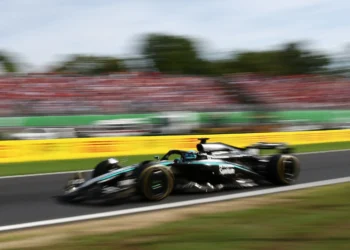Last year, Formula 1 introduced new aerodynamic regulations, bringing back the ground effect. The goal was to improve the spectacle and make the field more balanced. However, the expectations have not been met in terms of the number of overtakes in normal race situations.
The technical director of the FIA, Nikolas Tombazis, admitted, as quoted by Auto Motor und Sport, that the intended effects did not materialize: ‘Overtaking has become more difficult because the cars are creating more dirty air at the rear.
Tombazis believes that there have been improvements compared to the previous generation of cars, while also acknowledging that the FIA did not act quickly enough on regulatory gaps:
– We did not close some gaps quickly enough, especially in the area of the front wing endplate and the front brake ducts. But the turbulence is still significantly less severe than it was with the 2021 cars. Despite the recognized shortcomings, Tombazis clarified that changing rules before 2026 is not feasible: ‘Closing the gaps would mean going through the decision-making process again. It’s too late for that. We can only do better for 2026.’










